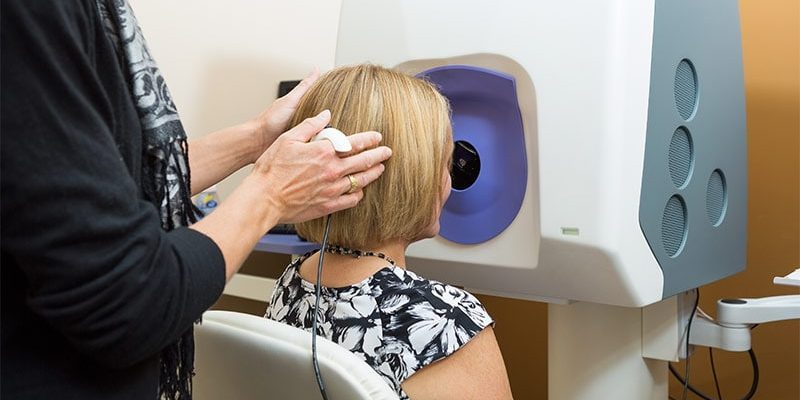Can Eye Screening Help Predict Kidney Failure Risk?
Retinal age, a validated biomarker of overall aging, shows efficacy as a potentially important, non-invasive biomarker to predict the risk of end-stage kidney disease (ESKD), new research shows.
“Retinal imaging is highly amendable to repeated and longitudinal assessments, facilitating long-term monitoring for chronic kidney disease [CKD], which, coupled with the potential of retinal age being a predictor of mortality, could help clinicians to estimate the rate and path of progression of CKD/ESKD more accurately,” the authors report in the study, published this month in the American Journal of Kidney Diseases.
In previous research, one of the current authors — Mingguang He, MD, PhD, a professor of ophthalmic epidemiology at the University of Melbourne, Australia — along with colleagues developed and validated a system that can accurately predict chronological age in a healthy population based on retinal images interpreted through a deep-learning system.
They further established that the retinal age gap — or the difference between the retinal age determined by the model and a person’s chronological age — could be an accurate marker of an individual’s true biological aging, and even be predictive of mortality and neurodegenerative diseases such as Parkinson’s disease.
Noting that the retinal age gap could likewise be an indicator of accelerated vascular aging, including in the kidney, they conducted the current study to determine the potential association between the retinal age gap and later kidney failure.
1-Year Increase in Retinal Age Gap Linked to 10% Rise in Risk for ESKD
The study included data on 35,864 other participants in the UK Biobank Study with retinal images and no ESKD at baseline.
With a median follow-up of 11 years, 115 (0.32%) of the participants were diagnosed with ESKD, and each 1-year increase in the retinal age gap was found to be independently associated with a 10% increase in the risk of incident ESKD (hazard ratio [HR], 1.10; P = .003), after adjustment for factors including age, gender and ethnicity, and other factors.
When participants were divided into quartiles, those with the highest retinal age gaps — in the fourth quartile — had more than double the risk of developing ESKD compared to those in the first quartile (HR, 2.77; P = .009), with a higher risk observed among females (HR, 4.73; P = .03) vs males (HR, 2.23; P = .08).
“These findings suggested retinal age gap is a promising biomarker of future occurrence of ESKD independent of traditional risk factors,” the authors conclude.
Microvascular Mechanisms “Inextricably Link” Retina, Kidney
The relationship between retinal aging and kidney disease makes sense, as the retina has long been considered as “a window to the kidney,” the authors note, with the two sharing common microvascular structures, physiologic and pathogenic pathways, “inextricably linking them in many diseases.”
“Consistent evidence has demonstrated the strong association of retinal microvascular changes, including venular dilatation and arteriolar narrowing with ESKD, which opens the door for retinal imaging, as a fast, safe, non-invasive and cost-effective method, to supplement CKD screening,” the authors explain.
The need for an early, convenient predictor is meanwhile high because of the low rates of early diagnosis of ESKD and the high morbidity and mortality if intervention is delayed.
While the risk for CKD, ESKD, and mortality increases substantially with age, wide variations in health status are well known to occur among people of the same chronological age.
Furthermore, the rate of age-related kidney damage in people of the same chronological age and with seemingly comparable clinical profiles can show substantial variation, underscoring the need for alternative biomarkers of biological age.
Other alternative aging biomarkers have also been associated with kidney decline, including DNA methylation and the polygenic risk of telomere attrition, the authors note.
However, advantages of retinal age as a predictor of potential future ESKD risk over the other aging biomarkers include its non-invasive nature, ease of calculation, and accuracy, they say.
“The non-invasive, cost-effective and accessible nature of the deep-learning-assisted retinal imaging could allow for large-scale screening of CKD and ESKD, allowing for more personalized interventions, if necessary,” the authors note.
The authors reported no relevant financial relationships.
Am J Kidney Dis. Published December 5, 2022. Full text
For more news, follow Medscape on Facebook, Twitter, Instagram, YouTube, and LinkedIn
Source: Read Full Article
